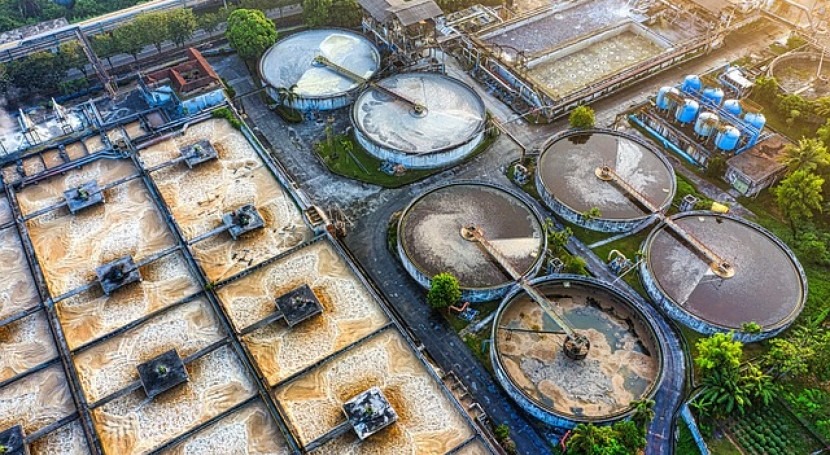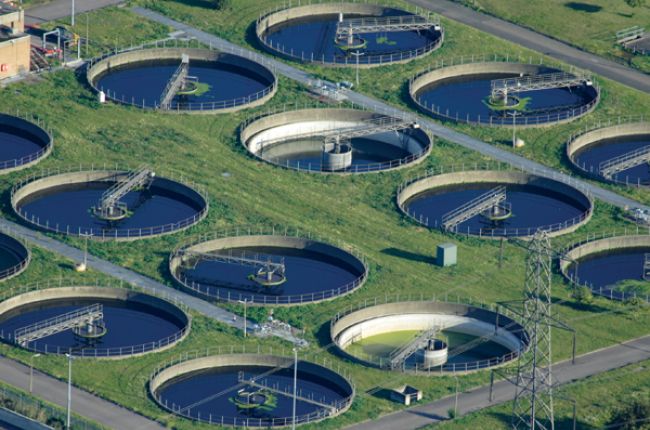Affordable Solutions for Large-Scale Waste Water Treatment Facilities
Affordable Solutions for Large-Scale Waste Water Treatment Facilities
Blog Article
Optimizing Drainage Treatment Processes: Approaches for Improved Water Quality and Resource Recuperation
In the world of wastewater therapy, the quest for improving efficiency and sustainability through procedure optimization is a recurring pursuit that holds immense significance. From advanced innovations to ingenious resource healing techniques, the landscape of wastewater treatment is developing rapidly.
Significance of Process Optimization
Optimizing waste water treatment processes through meticulous process optimization is critical for making best use of performance and guaranteeing environmental sustainability. By fine-tuning each step of the treatment process, from first consumption to last discharge, water therapy facilities can achieve greater degrees of pollutant removal, decrease energy consumption, and minimize the generation of waste byproducts. Refine optimization entails examining vital efficiency signs, such as hydraulic retention times, sludge retention times, and nutrient levels, to identify areas for renovation and carry out targeted options.
Efficient process optimization not just boosts the total performance of drainage therapy plants but likewise adds to cost financial savings and regulative conformity. By optimizing procedures, drivers can achieve higher therapy capacities without the demand for significant framework investments. In addition, improved therapy performance causes cleaner effluent discharge, decreasing the ecological impact on obtaining water bodies and ecological communities.

Advanced Treatment Technologies
In the world of waste water therapy, the implementation of innovative treatment innovations plays a critical duty in enhancing the total performance and performance of the therapy procedures. These sophisticated technologies supply ingenious services to resolve complex pollutants present in wastewater streams, making sure the removal of contaminants to meet rigid water top quality requirements. Advanced therapy procedures such as membrane bioreactors, ozonation, advanced oxidation procedures, and turn around osmosis enable the complete elimination of contaminants, including emerging contaminants like pharmaceuticals and individual treatment items.
Additionally, these modern technologies facilitate resource recovery by extracting valuable materials such as phosphorus, nitrogen, and energy from the wastewater. Progressed nutrient elimination modern technologies can recoup phosphorus and nitrogen for reuse in farming plant foods, while energy recovery systems like anaerobic digestion can harness biogas for electricity generation. By including innovative therapy modern technologies right into wastewater therapy plants, operators can improve water quality, reduce environmental influence, and relocate in the direction of a much more sustainable and resource-efficient approach to wastewater management.
Source Healing Methods
Source healing methods in wastewater treatment processes play an essential duty in making the most of the utilization of beneficial sources consisted of within wastewater streams. These methods goal to essence and reuse materials such as nutrients, power, and water from the wastewater, transforming what was once thought about waste right into important sources. One typical resource recovery method is the removal of nutrients like phosphorus and nitrogen from wastewater for reuse as fertilizers or in industrial processes. In addition, power recovery approaches such as anaerobic digestion and biogas manufacturing aid harness the energy possibility of raw material in wastewater to create power or warm.
Water healing strategies, such as membrane modern technologies and advanced filtering systems, allow the therapy and reuse of water for non-potable applications like watering or commercial processes. By executing resource healing strategies in wastewater therapy plants, not just can valuable sources be preserved and recycled, yet the total sustainability and performance of the therapy procedure can be substantially improved. As the concentrate on resource shortage and ecological sustainability proceeds to expand, the value of integrating source recuperation techniques into wastewater treatment processes comes to be significantly noticeable.
Lasting Practices in Wastewater Therapy
Executing lasting techniques in wastewater therapy centers is important for enhancing environmental stewardship and long-term operational efficiency. Lasting methods in wastewater treatment encompass an array of strategies targeted at reducing the environmental impact of therapy procedures while maximizing resource healing. One crucial aspect of lasting wastewater treatment is the application of energy-efficient modern technologies to reduce the carbon impact of therapy plants. This can consist of using renewable resource resources such as solar or wind power, as well as the optimization of existing procedures to lessen power consumption.
Furthermore, the adoption of sophisticated treatment technologies that advertise water reuse and recycling plays a critical role in sustainable wastewater monitoring. By treating wastewater to a high requirement, it can be repurposed for different non-potable applications, such as watering, industrial processes, and also drinkable water production in some cases. This not only saves beneficial freshwater sources however additionally lowers the volume of effluent released into the setting.

Instance Studies on Successful Optimization
As wastewater treatment centers significantly concentrate on sustainable techniques, real-world study showcasing effective optimization techniques serve as vital models for market innovation. One such study focuses on the execution of innovative nutrient removal technologies in a metropolitan wastewater therapy plant. By incorporating organic nutrient removal procedures and enhancing operational criteria, the center achieved considerable decreases in nitrogen and phosphorus degrees released into obtaining waters, ultimately improving total water quality.
One more notable study entails the assimilation of anaerobic food digestion systems in a commercial wastewater therapy plant to boost energy healing and source effectiveness (Waste Water Treatment). Via the food digestion of organic waste materials, the center not just created biogas for energy production but additionally lowered the quantity of sludge needing disposal. This dual benefit not just improved the plant's sustainability performance however additionally caused price savings
These effective optimization methods demonstrate the possibility for wastewater therapy facilities to straight from the source achieve both economic and ecological benefits through efficient procedures and innovative techniques. By gaining from these case research studies, industry experts can additionally optimize their look at this website very own operations to improve water top quality and resource recuperation.
Conclusion
In final thought, optimizing waste water therapy procedures with innovative modern technologies, source recuperation methods, and lasting methods is essential for boosting water top quality and optimizing source recovery. Waste Water Treatment. Study have shown effective application of optimization methods in various wastewater therapy centers. By remaining to focus on process optimization, we can guarantee effective and effective treatment of wastewater, ultimately causing an extra lasting and eco-friendly technique to taking care of water resources
By fine-tuning each action of the treatment process, from preliminary intake to final discharge, water therapy centers can achieve greater degrees of pollutant removal, decrease power usage, and lessen the generation of waste spin-offs.In the world of waste water treatment, the execution of sophisticated therapy technologies plays an essential duty in boosting the overall efficiency and efficiency of the therapy procedures. By integrating sophisticated therapy technologies right into wastewater treatment plants, operators can improve water quality, reduce ecological effect, and move towards an extra resource-efficient and lasting technique to wastewater management.
By executing source healing strategies in wastewater treatment plants, not only can beneficial sources be conserved and reused, but the general sustainability and efficiency of the treatment process can be substantially improved. Sustainable practices in wastewater treatment incorporate a variety of strategies aimed at reducing the environmental read influence of therapy procedures while taking full advantage of source healing.
Report this page